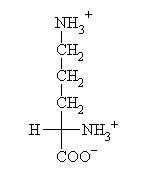 |
www.arginineresearch.com
Growth hormone (somatotrophic
hormone) release during Delta sleep cycle
Physical benefits of L-arginine stimulated growth hormone only evidenced during
intense exercise and specific sleep-phases
GH release evidenced by oral L-arginine is dose dependent and time dependent
Females prior to menopause possess higher GH levels than their male counterparts
Growth hormone releasing hormone (GHRH) stimulates GH synthesis and GH release
in humans
Therapeutic doses
of L-arginine in humans
Anterior pituitary release of growth hormone in response to oral ingestion of
L-arginine protects cells from DNA toxic effects
Decrease in size
of human adipocytes (fat cells) evidenced by oral ingestion of L-arginine
Oversecretion of insulin in L-arginine formulas blunts beneficial effects
Sucrose (table sugar) contraindicated in L-arginine formulas
High glycemic matrix disrupts arginine cycle
Protein ingested with L-arginine blunts arginine GH benefits
High glycemic sugars and carbohydrates decreases efficacy of arginine formulas
and compounds
Maltodextrins, sucrose, glucose, dextrose, and other high glycemic sugars
decreases fat-burning benefits of arginine.
Sucrose and other high glycemic sweeteners suppress nitric oxide (NO) production
Lioslysis release of fatty acids from adipose tissue in response to L-arginine
ingestion
Meals too high in protein and low in carbohydrates raise blood glucose via
glucagon stimulation
Ingestion of more than 30 grams of protein at one feeding stimulates fat-storage
and does not increase muscle size
Oral ingestion of L-arginine induces increases in nitric oxide production during
vaso-occlusive crisis
T-cells, NK cells, B cells, monocyte/macrophages exhibit ability to produce
growth hormone
L-arginine stimulated growth hormone (GH) augments T-cell adhesion to
extracellular matrix proteins
GH levels decline in all aged humans and other mammals reducing immune events
associated with T-cells
Adult growth hormone deficiency reduces bone and muscle mass, impairs exercise
capacity, and increases fat mass
Growth hormone (GH) production is a species-related anthropologic metabolic
survival function
Prevention of the reactivation of herpes simples virus associated with oral
ingestion of L-arginine
Essential co-factors in the formulation of orally ingested L-arginine
L-arginine: doses for increasing muscle mass in humans and mammals
L-arginine enhances immune function in humans and mammals: T-lymphocyte
functions
Autoimmune responses following L-arginine therapy in humans
L-arginine: An important modulator of immune system activation
Arginine metabolism determined by the expression of
arginine-metabolizing-enzymes; inducible NO synthase and arginase I and II
Oral L-arginine provides benefits in all athletic groups over age 21
L-arginine: The only endogenous nitrogen-containing substrate of nitric oxide
synthase (NOS)
Reciprocal regulation of arginase and nitric oxide synthase (NOS) in L-arginine
metabolizing pathways in humans
L-arginine: precursor of endogenous nitric oxide (NO)
Nitric Oxide (NO) synthesized from L-arginine mediates endothelium dependent
dilation in human veins
Benefits of oral L-arginine: veins and arteries of human circulatory system
Nitric Oxide (NO) synthesized from oral ingestion of L-arginine palys direct
role in preventing atherosclerosis
Increased sexual response of women following oral ingestion of 6 g of L-arginine
Targeting arginase II for the treatment of sexual arousal disorders
L-arginine serves as a precursor for Creatine
L-arginine: Role of effective activity in human health and pathologies
|
|
|



Human guidelines for growth hormone (GH) precursors in
humans
IGF-1 levels should be kept within age-related
physiological ranges by titrating growth hormone (GH)
doses
IGF-1: Bound to IGFBP in plasma
Determiniation of critical timing factors in pituitary
release of growth hormone (GH)
Cells of the immune system produce small amounts of
growth hormone
Human GH gene cluster, located on chromosome 17,
consists of homologous genes
Long-term oral use of L-arginine in humans
Absorption pathways of L-arginine in humans
L-arginine inhibitory agents
Dose-dependent properties of L-arginine in humans
Blood-brain competitors for L-arginine
Improperly formulated L-arginine formulas increase the
growth and replication of HSV-1 (herpes simplex virus)
Arginine-Lysine antagonism: Arginine and Ornithine
compete for common transport system with L-Lysine
Lysine competes with L-arginine to cross blood-brain
barrier
Lysine, an analog of arginine, antagonizes the muscle
growth-promoting action of arginine
Arginine and lysine may not be orally ingested together
in the same matrix
Manipulation of laboratory grade L-arginine reduces
and/or eliminates activation of herpes simples viruses
L-arginine hydrochloride (HCL) should not be used in
human arginine formulations and compounds
Amino acids that compete with L-arginine render GH
formulas inert and prevent pituitary release of GH and
immune benefits
Appropriate formulations of oral L-arginine in humans
L-arginine generated GH reduces body fat and increases
muscle mass in humans
Growth hormone controlled by releasing and inhibiting
hormone from the hypothalamus
|
![]()
![]()







